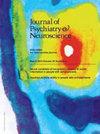Uncovering the link between synaptic density and mental illness through in vivo imaging.
IF 4.1
2区 医学
Q2 NEUROSCIENCES
引用次数: 0
Abstract
The in vivo study of synaptic density (the indirect estimated sum of presynaptic active zones and postsynaptic densities in brain tissue) through positron emission tomography (PET) is a rapidly growing field of research that has the potential to revolutionize our understanding of mental illness and of neurodevelopmental conditions. The idea that the brain’s synaptic wiring, neural function and behaviour are closely linked is not a new one, but advances in neuroimaging techniques have only recently made it possible to collect direct empirical data linking the status of brain synapses (synaptic density) with neural function, behaviour and disease in living humans. Forty-five years ago, Irwin Feinberg suggested that excessive synaptic pruning during adolescence could lead to severe mental illness. Unequivocal evidence to support this theory in living humans is still lacking. The overall objective of this editorial is to present our stance on the value of measuring synaptic density in vivo using PET to better understand the development of mental illness. We argue that this novel approach might be more translationally and conceptually useful than related techniques using MRI because it is likely more proximal to function. As such, it could generate an unprecedented level of comprehension on synaptic organ ization and pruning and its role in the development of mental illness. We first provide an overview of the keystone neuroscience concepts of synaptic communication and of synaptic pruning; we discuss the popular, though still unproven, theory that abnormal (excessive) synaptic pruning during brain development potentially leads to mental illness. We then provide our perspective on the utility of PET imaging of synaptic density and consider pitfalls and hurdles ahead in translating findings in a clinically meaningful way.通过体内成像揭示突触密度与精神疾病之间的联系。
本文章由计算机程序翻译,如有差异,请以英文原文为准。
求助全文
约1分钟内获得全文
求助全文
来源期刊
CiteScore
6.80
自引率
2.30%
发文量
51
审稿时长
2 months
期刊介绍:
The Journal of Psychiatry & Neuroscience publishes papers at the intersection of psychiatry and neuroscience that advance our understanding of the neural mechanisms involved in the etiology and treatment of psychiatric disorders. This includes studies on patients with psychiatric disorders, healthy humans, and experimental animals as well as studies in vitro. Original research articles, including clinical trials with a mechanistic component, and review papers will be considered.

 求助内容:
求助内容: 应助结果提醒方式:
应助结果提醒方式:


